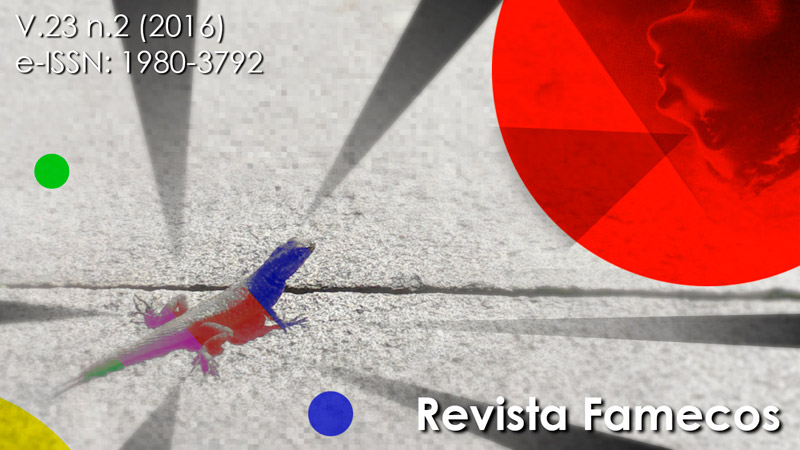Young people and audiovisual culture: new ways of watching television
DOI:
https://doi.org/10.15448/1980-3729.2016.2.23173Keywords:
Television reception, Communication, ConvergenceAbstract
This article attempts to examine some of the theoretical concepts that, until recently, have been crucial for the understanding of TV-related reception processes. The present discussion belongs to a reseach project which focuses on audiovisual culture in Uruguayan young people during times of media convergence, and the place of television within such process. What is to watch TV, for the young? What does it mean? In which narrative of everyday life is this activity integrated? These are some of the questions that articulate the project. Answering them will envolve a reconsidaration of the notions of mediation, domesticity, and domestication. Have home-related and the domestic aspects lost their relevance in the new ways of watching television? Some early results have been rendered by a series of semi-structured interviews which focus on how young people construct their everday practices.Downloads
References
BERGER, Peter, LUCKMANN, Thomas. La construcción social de la realidad. Amorrortu. Buenos Aires, 1979.
DOMINZAÍN, S., RADAKOVICH, R., DUARTE, D., CASTELLI RODRÍGUEZ, L., Imaginarios y Consumo cultural. Tercer informe nacional sobre consumo y comportamiento cultural. UDELAR-MEC, Montevideo, 2014.
DOMINZAÍN, S., RAPETTI, S., RADAKOVICH, R. Imaginarios y Consumo Cultural. Segundo informe nacional sobre consumo y comportamiento cultural. Uruguay 2009, Montevideo, 2009.
FUENZALIDA, Valerio. Televisión abierta y audiencia en América Latina. Buenos Aires: Norma, 2002.
GRUPO RADAR. El Perfil del Estudiante universitario 2014.
http://www.gruporadar.com.uy. Acceso en: 4 oct. 2014.
______. El Perfil del Internauta uruguayo 2014. http://www.gruporadar.com.uy. Acceso eb: 19 dic. 2014.
KATZ E., SCANNELL P. (ed.). The End of Television?: Its Impact on the World (So Far). The Annals of the American Academy of Political and Social Science, Sage, v. 625, Londres, 2009.
LIVINGSTONE Sonia, From family television to bedroom culture: Young people’s media at home, en DEVEREUX, Eoin (Ed.). Media Studies: Key issues and Debates, Sage, Londres, 2007.
LULL, James. Inside Family Viewing: Ethnographic Research on Television Audience, Routledge, Londres, 1990.
______. World Families Watch Television, Sage, Londres, 1988.
MARONNA, Mónica, SÁNCHEZ VILELA, Rosario. La puesta en relato de lo cotidiano, en RICO, Carmen (org.) Relecturas de Michel de Certeau, Universidad Iberoamericana, México, 2006.
MORLEY, David. Televisión, audiencias y estudios culturales. Amorrortu, Buenos Aires, 1996.
_____. Medios, modernidad y tecnología. Hacia una teoría interdisciplinaria de la cultura, Gedisa, Barcelona, 2008.
OROZCO, Guillermo. Televisión, audiencias y educación, Ed. Norma, Buenos Aires, 2001.
SÁNCHEZ VILELA, Rosario. Sueños Cotidianos. Telenovela y oralidad, Taurus-UCU, Montevideo, 2000.
SILVERSTONE, Roger, HIRSCH, Eric. Los efectos de la nueva comunicación. El consumo de la nueva tecnología en el hogar y en la familia, Bosch, Barcelona, 1996.
______. Televisión y Vida Cotidiana, Amorrortu, Buenos Aires, 1996.
______. Por qué estudiar los medios, Amorrortu, Buenos Aires, 2004.
THOMPSON, John B.. Los media y la modernidad. Una teoría de los medios de comunicación, Paidós, Buenos Aires, 1995.
Downloads
Published
How to Cite
Issue
Section
License
Copyright
The submission of originals to Revista Famecos implies the transfer by the authors of the right for publication. Authors retain copyright and grant the journal right of first publication. If the authors wish to include the same data into another publication, they must cite Revista Famecos as the site of original publication.
Creative Commons License
Except where otherwise specified, material published in this journal is licensed under a Creative Commons Attribution 4.0 International license, which allows unrestricted use, distribution and reproduction in any medium, provided the original publication is correctly cited.






